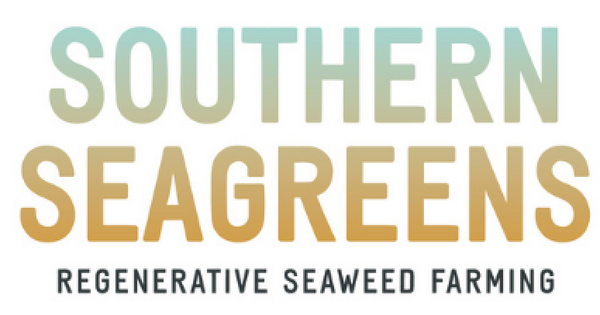We grow our native kelp off the coast at Flinders on the beautiful Mornington Peninsula, Victoria. Although we use conventional ropes, buoys and anchors, there’s a lot of work in getting it all configured and anchored securely at the right depth to grow happy kelp. We’ve been farming at Flinders for three years now. We’ve learned heaps but it’s an ever-changing environment and I suspect we’ll never stop learning. We’ve been grown Giant kelp and we’re focusing this year of Golden kelp – a species also referred to by some as Australian kombu.
Kelp farming is a growing industry that plays an important role in sustainable aquaculture and ocean health. Unlike land-based crops, kelp doesn’t require soil, freshwater, or fertilizers. Instead, it grows in the ocean, absorbing nutrients directly from seawater. Kelp farms are typically located in sheltered coastal waters where conditions are optimal for kelp growth — cool temperatures, ample sunlight, and steady currents.
The process begins with kelp spores collected from mature kelp plants. These spores are cultivated in a hatchery, where they are encouraged to settle and grow on long lengths of twine or rope, often wrapped around PVC pipes or spools. After a few weeks in the controlled hatchery environment, the baby kelp, known as sporophytes, are strong enough to be transferred to the open ocean.
At sea, the seeded lines are attached to horizontal ropes suspended in the water column by buoys and anchored to the seafloor. These 'longlines' are spaced to allow for adequate sunlight penetration and water flow, ensuring the kelp receives the nutrients it needs. Over the course of several months, the kelp grows rapidly — some species can grow up to 50cm per day under ideal conditions.
Kelp farming requires minimal maintenance during the growing season. Farmers monitor the site for signs of damage from storms or biofouling by unwanted species. The kelp itself helps improve water quality by absorbing excess carbon dioxide and nitrogen, which contributes to a healthier marine ecosystem and combats ocean acidification.
Kelp reaches maturity usually between 4 to 6 months after being planted at sea. We then harvest it and bring it back to our warehouse at Dromana where we stabilise it before shipping it to local chefs or turning it into our products for home cooks. As demand grows for sustainable, ocean-based resources, kelp farming is becoming an increasingly vital part of the blue economy. We reckon kelp farming as an emerging industry could have a bright future in Australia and come to play an important role in our local food system.
Photo Credit: Photo of Bert and Cam on the Southern Seagreens kelp farm courtesy of James Geer Photography. Bottom pic is of our Giant kelp crop 2024


